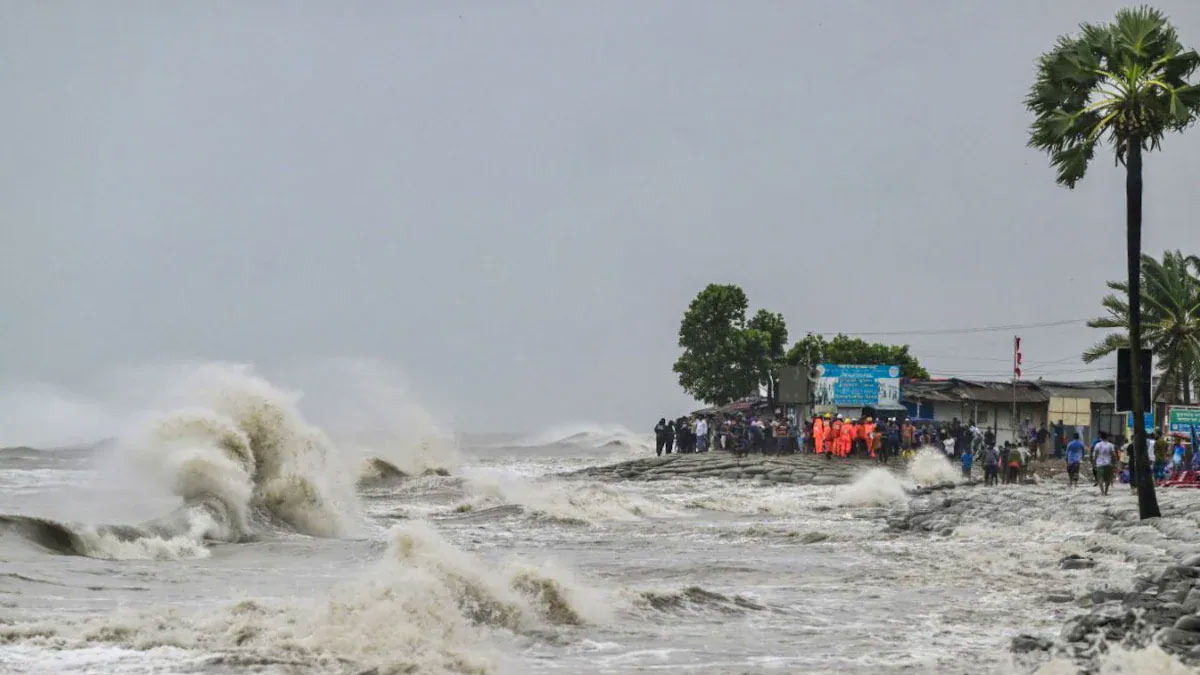
Heavy rain and thunderstorms brought by Cyclone Remal have caused significant devastation in northeastern states of India, resulting in at least 37 fatalities and dozens more missing. The cyclone has hit Mizoram particularly hard, where the majority of deaths occurred. Hundreds of people have been displaced, seeking refuge in relief camps as their homes were destroyed and power lines were knocked down.
Table of Content:-
Mizoram: The Worst-Hit State
In Mizoram’s capital, Aizawl, Cyclone Remal has taken a severe toll. The state government reported 27 deaths in the Melthum, Hlimen, Falkawn, and Salem Veng areas. Search and rescue operations are ongoing, and the death toll is expected to rise. Chief Minister Lalduhoma has announced a ₹15 crore State Disaster Relief Fund (SDRF) and ₹4 lakh as ex gratia for the families of the deceased.
Impact in Other States
Assam also experienced significant damage, with four fatalities and 18 injuries reported. In Sonitpur district, a falling tree injured 12 children when it struck a school bus. In Nagaland, four lives were lost and over 40 houses were damaged due to the cyclone's powerful winds and heavy rain. The National Disaster Response Force (NDRF) has deployed an underwater drone to assist with search operations, emphasizing the complexity of the rescue efforts in such treacherous conditions.

Cyclone’s Path and Initial Landfall
Cyclone Remal made its landfall near the Bangladesh-West Bengal border, with wind speeds reaching up to 135 km/h. This led to widespread power outages affecting lakhs of people across the region. The cyclone’s impact has extended far beyond the immediate coastal areas, illustrating the extensive reach and destructive potential of such natural disasters.
Health Risks Post-Cyclone or Flood
In the aftermath of cyclones and floods, numerous health risks emerge, threatening the well-being of the affected populations. It's crucial to be aware of these hazards and take necessary precautions to mitigate them.
Contaminated Floodwater
Floodwater often carries harmful bacteria and chemicals, posing a risk of infections such as wound infections, diarrhoea, conjunctivitis, and leptospirosis. Contaminated water can also spoil food and medicines. Here are a few safety tips:
- Avoid contact with floodwater and mud, especially if you have open wounds.
- Clean and cover any cuts or abrasions immediately.
- Wash hands with soap or sanitizer after exposure to floodwater.
- Discard any food or medicines that have come into contact with floodwater.
- Boil drinking water if the local supply is suspected to be contaminated.
Mosquito-Borne Infections
Standing water from floods creates ideal breeding grounds for mosquitoes, which can spread diseases.
- Use insect repellents and mosquito nets.
- Wear protective clothing.
- Remove standing water to prevent mosquito breeding.
Loss of Medication
During natural disasters, access to essential medications can be disrupted, posing serious health risks for individuals reliant on regular medication.
- If evacuating, take medicines, prescriptions, and healthcare information with you.
- Replace any medication that has been compromised, especially if it requires refrigeration.
- Contact your doctor for new prescriptions if needed.
Carbon Monoxide Poisoning
Using petrol-powered generators in confined spaces can lead to carbon monoxide poisoning. Ensure generators are used in well-ventilated areas, preferably outdoors.
Injuries from Falls
Cleaning up after a cyclone or flood can lead to injuries, particularly falls on slippery surfaces.
- Seek assistance if the cleanup task is too large.
- Use tools like walking sticks for stability.
- Call emergency services if severe injuries occur.
Bottomline
Cyclone Remal has left a trail of destruction and despair across northeastern India. As rescue and relief operations continue, it is vital to address the numerous health risks that follow such natural disasters. By taking appropriate precautions, affected communities can better protect themselves from the secondary impacts of cyclones and floods. The lessons learned from this tragic event underline the importance of preparedness and effective response strategies in mitigating the impact of future natural disasters.
Also watch this video
How we keep this article up to date:
We work with experts and keep a close eye on the latest in health and wellness. Whenever there is a new research or helpful information, we update our articles with accurate and useful advice.
Current Version